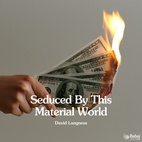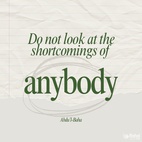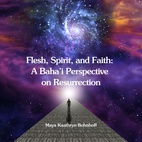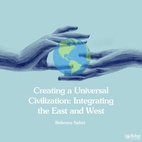The views expressed in our content reflect individual perspectives and do not represent the authoritative views of the Baha'i Faith.
When I was a kid, I saw an old movie that made me think deeply about death. Called On Borrowed Time, it retells an ancient Greek fable about Death being trapped up a tree, unable to do his work.
You’d have to see the film to get the full impact, but I’ll summarize: basically, to save his beloved grandfather, a young boy tricks Mr. Brink – aka the Grim Reaper, Death, Thanatos – into climbing a tree that imprisons him.
Everywhere, people stop dying.
Spoiler alert: the boy soon learns that death is an essential part of life, and that stopping death means prolonging the suffering of millions and retarding the progress of the world – and of each individual soul.
Death, it turns out, is essential to life. Life depends on death, drawing a circle that has gone on forever.
Perhaps this film helped lead me to the Baha’i Faith, which I learned about and began to investigate several years later as a teenager. Baha’u’llah’s teachings on life and death resonated with me as soon as I heard them:
- The first life, which pertaineth to the elemental body, will come to an end, as hath been revealed by God: “Every soul shall taste of death.” But the second life, which ariseth from the knowledge of God, knoweth no death …
- O Son of Worldliness! Pleasant is the realm of being, wert thou to attain thereto; glorious is the domain of eternity, shouldst thou pass beyond the world of mortality; sweet is the holy ecstasy if thou drinkest of the mystic chalice … Shouldst thou attain this station, thou wouldst be freed from destruction and death, from toil and sin.
- … true life is not the life of the flesh but the life of the spirit. For the life of the flesh is common to both men and animals, whereas the life of the spirit is possessed only by the pure in heart who have quaffed from the ocean of faith and partaken of the fruit of certitude. This life knoweth no death, and this existence is crowned by immortality.
RELATED: What Cremation Tells Us about Death
I soon realized, after I grew to adulthood and suffered through the deaths of parents and grandparents and a beloved younger sister, that one of the biggest and most important tasks we have to deal with in this physical existence involves coming to terms with the reality of death.
Every human being faces that same existential struggle.
The loss of a loved one can hit us very, very hard. We suffer, mourn, and grieve, and our grief can overpower us. I’ve found, in my own life, that it helps to be able to remember, and to have a physical reminder of that loved one’s presence – a place to visit, where memory and meditation can recall the spirit of that departed person.
Grief is really only love expressed in the beloved’s absence, and for that reason the Baha’i teachings recommend burial. Abdu’l-Baha, in a letter he wrote to Laura Clifford Barney about burial versus cremation, said:
… although the human soul hath severed its connection with the body, friends and lovers are still vehemently attached to what remaineth, and they cannot bear to have it instantly destroyed. They cannot, for example, see the pictured face of the departed blotted out and scattered, although a photograph is only his shadow and in the end it too must fade away. So far as they are able, they protect whatever remainder they have of him, be it only a fragment of clay, a tree, or a stone. Then how much more do they treasure his earthly form! Never can the heart agree to look on the cherished body of a friend, a father, a mother, a brother, a child, and see it instantly fall to nothing — and this is an exigency of love.
RELATED: The Environmental Case Against Cremation and Embalming
Why do we keep the photographs, videos, and letters from our departed relatives? We keep them because they remind us of their love.
As the old movie about Mr. Brink suggests, we’re all on borrowed time, our lives constantly moving away from our first birth and ever closer to our second. We can help ourselves and the people we love by recognizing that fact and preparing for its inevitable arrival. Part of that preparation involves planning for two eventualities by answering these questions: How can I best develop my spirit while I’m still here in this plane of existence; and what do I want to do with my body when it has done its job?
















Comments
Sign in or create an account
Continue with Googleor